Gypsy/Travellers in Scotland - A Comprehensive Analysis of the 2011 Census
This report brings together analysis previously published to provide a comprehensive and wide ranging evidence base on Scotland’s Gypsy/Travellers. It presents analysis of key areas such as health, education, housing, transport and economic indicators to reveal important information on the lives and life chances of Gypsy/Travellers.
8. Transport
In 2011 Gypsy/Travellers in Scotland, compared to the population as a whole, were less likely to have access to a car.
The following chapter shows some transport indicators which, amongst other findings, shows that Gypsy/Travellers were less likely to have access to a car.
Chart 34: Proportion of Gypsy/Travellers with no Access to a Car or Van by Urban Rural – all people in households aged 16 and over, Scotland, 2011
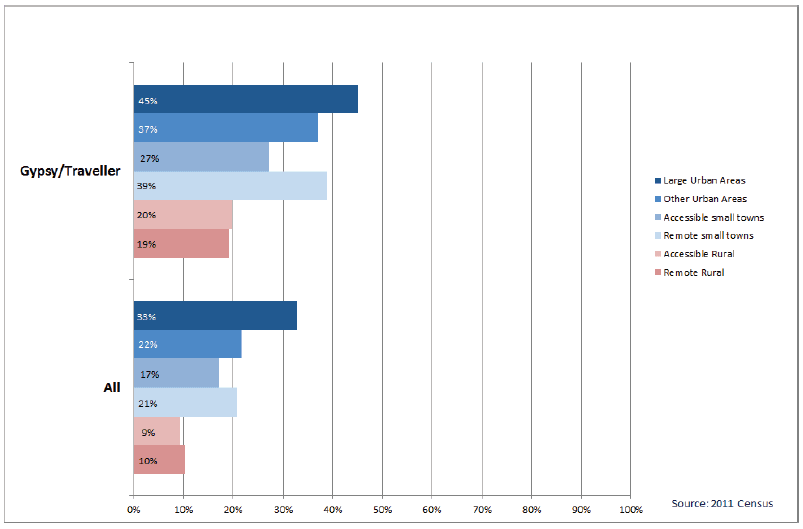
Chart 34 shows that a higher proportion of Gypsy/Travellers aged 16 and over were in households with no access to a car or van compared to the population as a whole.
In rural areas a fifth (20 per cent) of Gypsy/Travellers had no access to a car or van compared to only a tenth (10 per cent) of the population as a whole. In small towns, a third of Gypsy/Travellers had no access to a car or van compared to 18 per cent of the population as a whole; in urban areas, two fifths (41 per cent) of Gypsy/Travellers had no car or van access compared to 28 per cent of the population as a whole.
The census data[22] showed that 40 per cent of Gypsy/Travellers had access to one car or van, which was the same as the population as a whole. Gypsy/ Travellers were less likely to own 2 cars than the rest of the population (18 per cent compared with 27 per cent) and less likely to own 3 cars or more than the rest of the population (6 per cent compared with 9 per cent).
Chart 35: Gypsy/Travellers by Method of Transport to Work – all people aged 16-74 in employment, Scotland, 2011
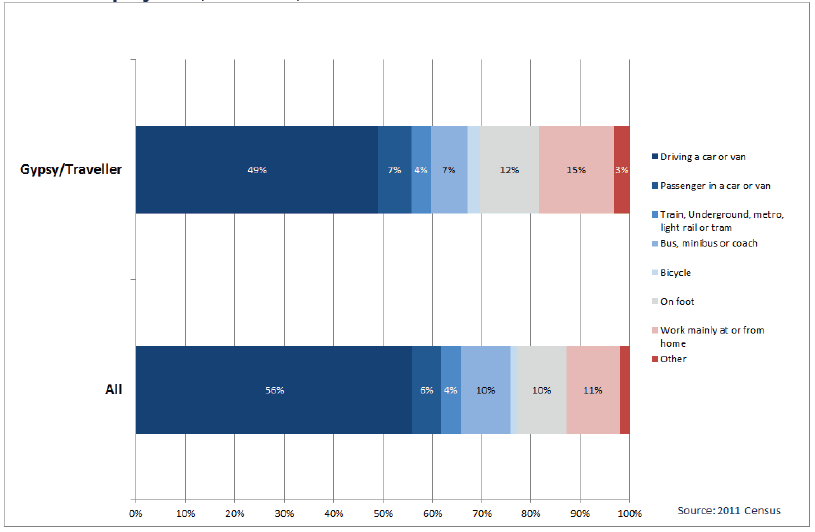
Chart 35 shows that just under half (49 per cent) of Gypsy/Travellers drove to work compared to 56 per cent of the population as a whole. A slightly higher proportion of Gypsy/Travellers worked mainly at or from home (15 per cent compared to 11 per cent of the population as a whole).
Chart 36: Gypsy/Travellers by Method of Transport to Study – all people aged 4 and over studying the week before the Census, Scotland, 2011
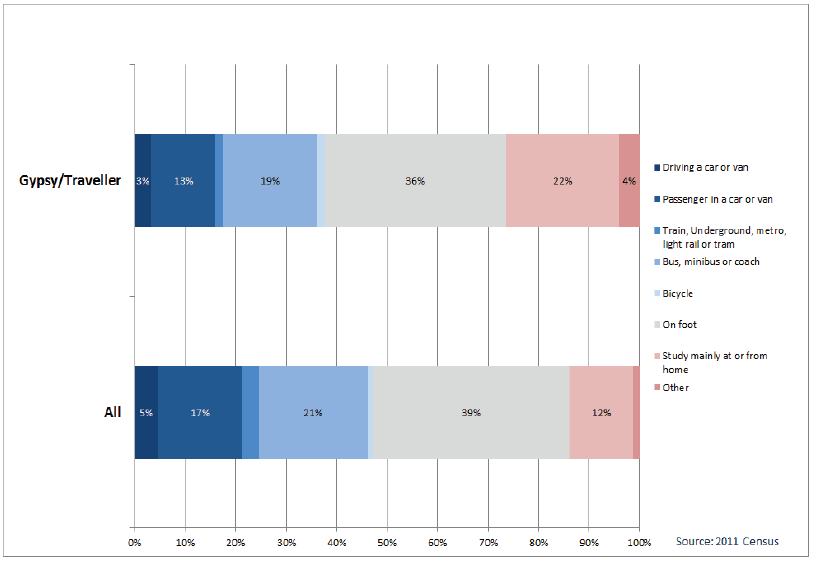
Chart 36 shows that Gypsy/Travellers were less likely to travel to their place of study[23] by car and more likely to study at home than the general population.[24] Almost a quarter (22 per cent) of Gypsy/Travellers studied at home compared to an eighth (12 per cent) of people in the population.
Chart 37: Gypsy/Travellers by Distance Travelled to Work – all people aged 16-74 in employment, Scotland, 2011
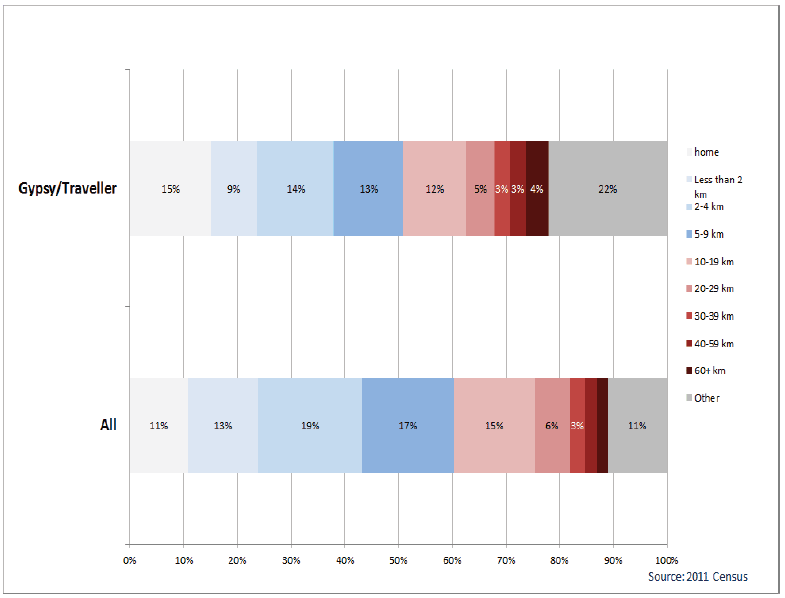
Chart 37 shows that Gypsy/Travellers were much more likely to have recorded their distance travelled to work in the ‘Other’ category, which included those ‘No fixed place [of work]’, ‘Offshore’ or ‘Outside of the UK’. Over a fifth (22 per cent) of Gypsy/Travellers were in this category compared to just over a tenth (11 per cent) of the population as a whole.
Chart 38: Gypsy/Travellers by Distance Travelled to Study – all people aged 4 and over studying the week before the Census, Scotland, 2011
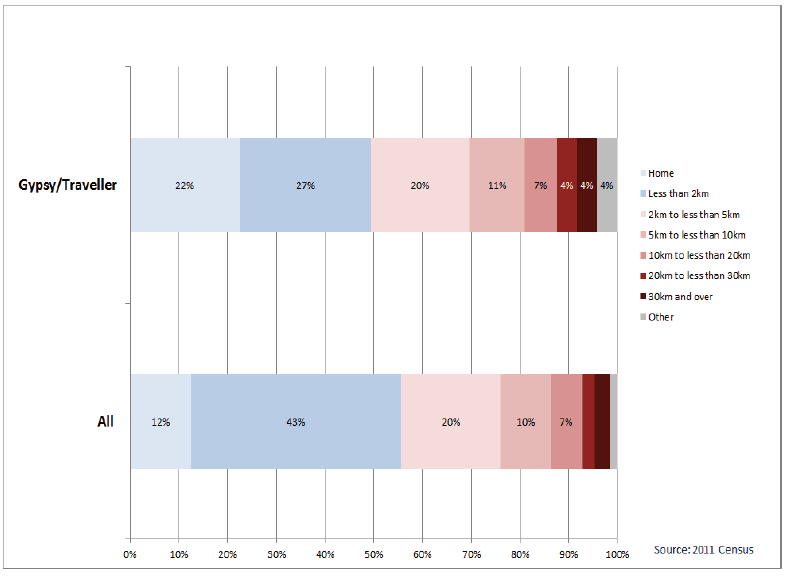
Chart 38 shows that Gypsy/Travellers were much more likely to study[25] at home[26] and less likely to travel short distances to their place of study. Only a quarter (27 per cent) travelled less than 2km to their place of study compared to 43 per cent of the population as a whole.
Contact
Email: Mhairi Wallace
There is a problem
Thanks for your feedback